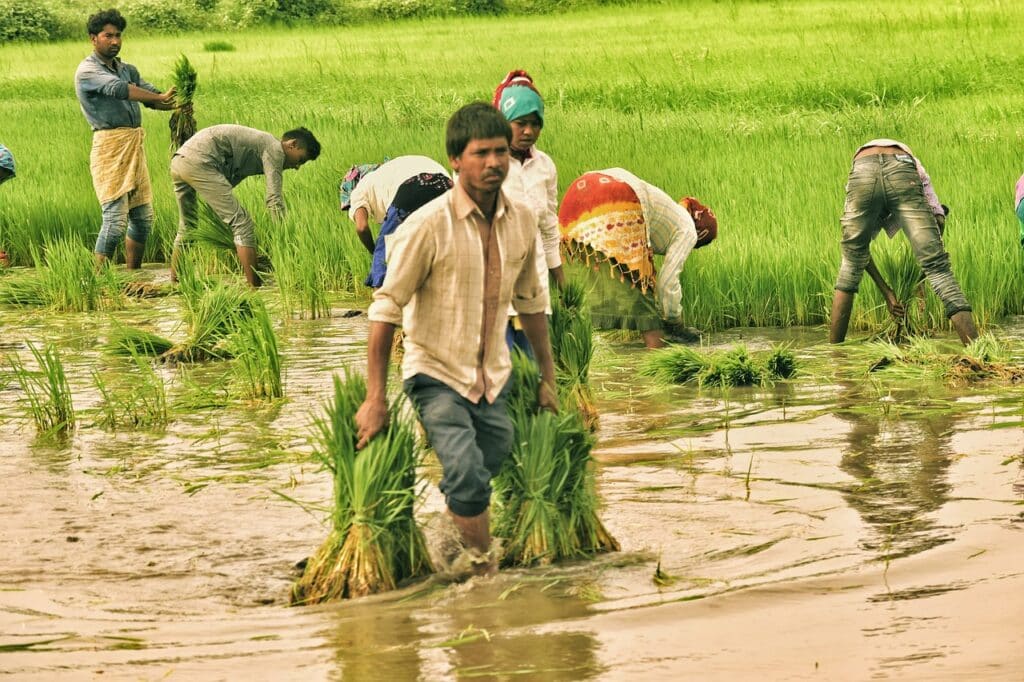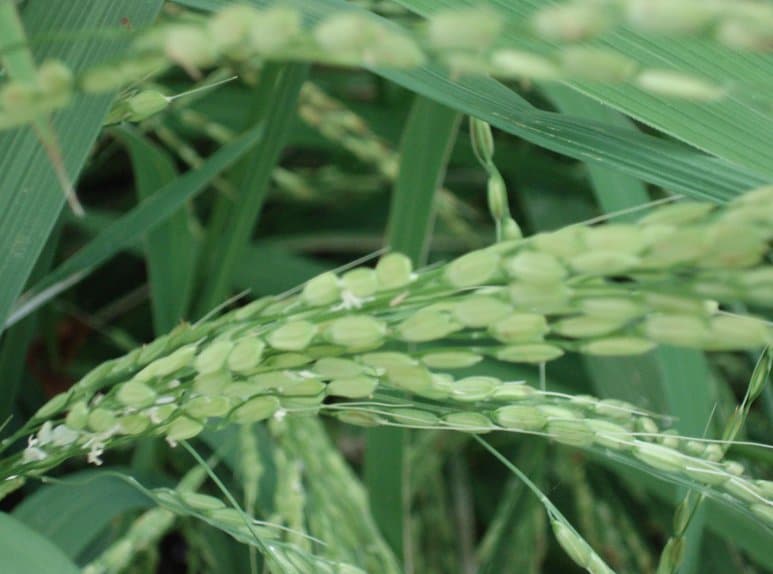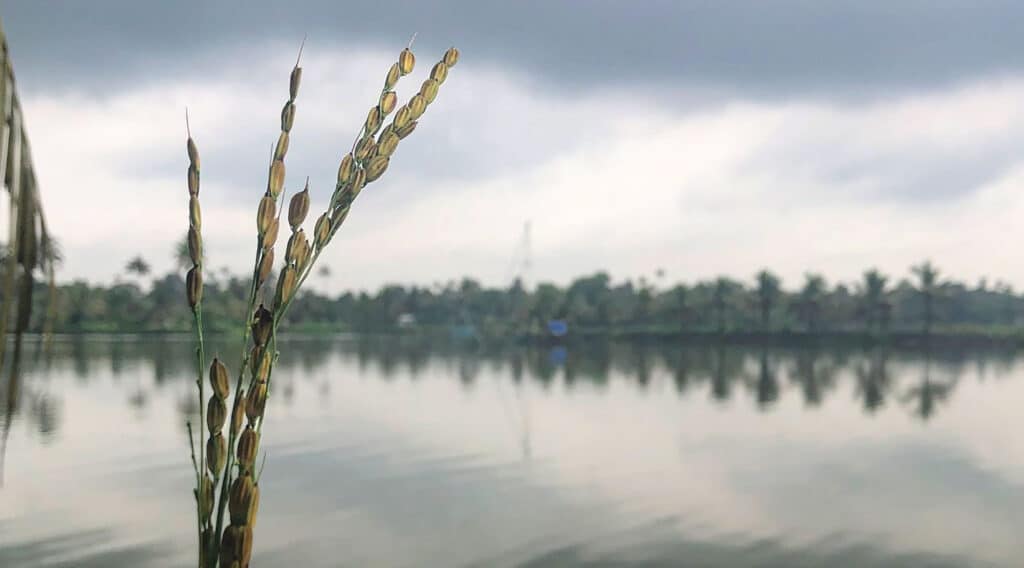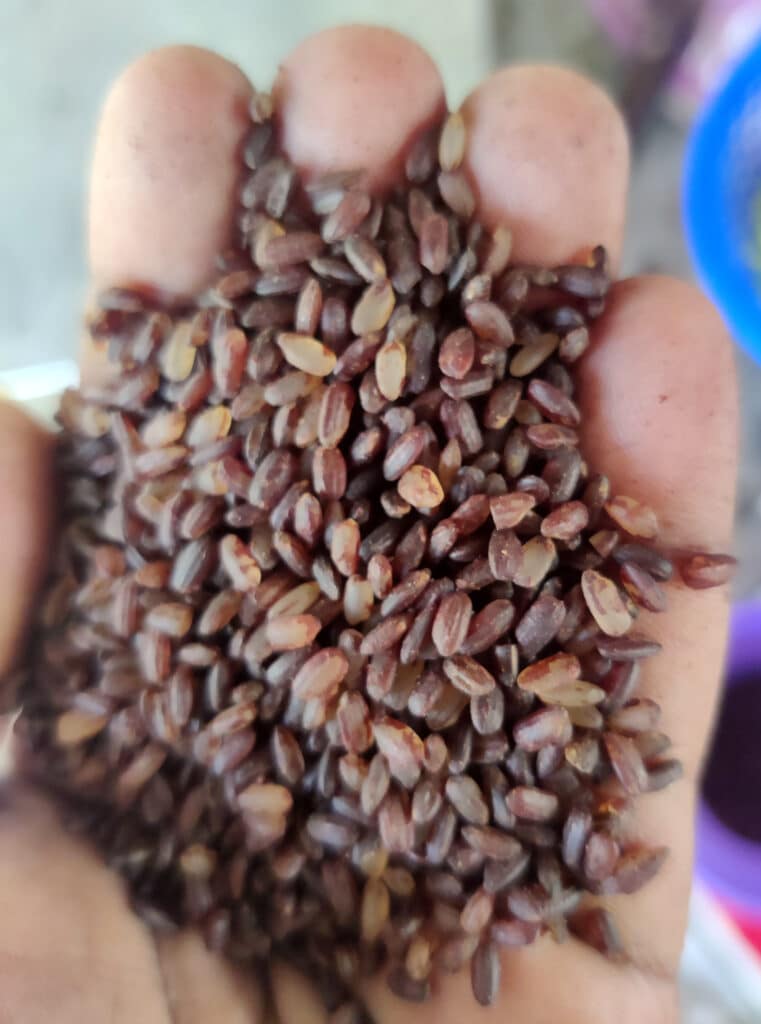India’s Climate-Adaptive Ancient Rice Stages a Comeback

Pokkali is a salt-tolerant rice variety grown in the tidal wetlands of the southern Indian state of Kerala. Pokkali cultivation started in the 14th century when a catastrophic flood washed rice seeds from the surrounding hills into Kerala’s coastal belt. Local farmers developed a uniquely symbiotic paddy-and-prawn cultivation process. Pokkali cultivation had dwindled over the the last few decades, but its climate-adaptability has triggered a renewed interest and the coastal districts of Kerala have recently seen a revival of the unique system of Pokkali farming.
The tallest paddy plant in the world, Pokkali grows up to 2 metres, with its grain-bearing head staying above the brackish flood waters that inundate coastal Kerala every year, where rising sea levels and frequent floods pose imminent climate threats.
The Cultivation Process
The farmers create a naturally organic environment where the tidal tracts are used alternately for rice farming and prawn, shrimp and sometimes, fish cultivation. During monsoon, water is let into the field by opening sluice shutters, which also brings prawn larvae along with the water inflow. And during low tides, excess rainwater is released through a bamboo screen that keeps the shrimps and prawns in the pokkali fields. When rice is harvested in September, the grain-bearing head is sliced off and the stalk is left to decompose in the water that adds to the soil fertility and becomes the organic feed for the resident aqua population in the tracts. The fields are left idle for the next few months till March, when prawns and shrimps are harvested, the shedded scales and droppings further enriching the fertility of the soil. The rice-prawn farming culture thus remains purely organic.
“We supplement our income from sale of prawn and shrimp grown in our rice fields” – said Joseph Chirayil, a farmer from a coastal village in Alappuzha district.

Impact on Environment
The prime environmental impact of this indigenous farming method lies in its climate-resilient nature with its ability to tolerate salinity and soil acidity, as well as submergence that has assumed paramount importance with rising sea levels and frequent floods – two direct fallouts of climate changes that are increasingly affecting the coastal belts of Kerala. Another significant aspect is the carbon sequestration efficiency of pokkali fields because of the plant parts left to decompose in the soil sediments that effectively capture and store carbon dioxide in a natural way.
Causes for Decline
The rusty-red and robust grains, rich in protein and antioxidants, was one of the Kerala’s chief staples for many centuries. But the last few decades saw a sharp decline in Pokkali cultivation despite the heritage grain having earned the Geographical Indication tag in 2009 for its unique flavour and taste of terroir (a taste unique to the region due to soil and climatic factors).
The primary reason for the gradual decline of pokkali cultivation is its low yield of about 1.5 tonnes per hectare vis-à-vis 4 to 5 tonnes of the high-yielding rice crops. And the relative low returns from pokkali have made a paradigm shift in the basic farming process: more and more pokkali farmers have been using their tracts for prawn harvesting only for higher returns, a move that has disrupted the integrated, climate-adaptive farming system.
“The hard manual labour is also putting off our next generation from taking up pokkali farming” – said Chirayil, who is a fourth generation farmer. His two sons took up office jobs and relocated in Chennai, and not keen to carry on farming in their ancestral land. Rapid urbanisation of these traditional farmlands and industrial pollution of wetlands have also posed serious threats to pokkali cultivation.
According to State Planning Board data of 2010-11, pokkali fields have reduced to only about 5000 hectares from more than 25,000 hectares in just over two decades, and actual cultivation takes place in less than 1000 hectares.
Kerala Floods 2018 and its Effect on Pokkali
The devastating flood in Kerala in the monsoon of 2018 was the worst in the last 100 years. It made international headlines and left more than 400 people dead and thousands homeless. Kerala’s fertile plains were ravaged and a joint report by the state government, World Bank, UN, Asian Development Bank & European Union estimated a loss of Rs 2,723 crore (USD 330 million) in crop damages and Rs 3,558 crore (USD 430 million) in crop loss. However, it was noticed that Pokkali fields mostly withstood the ravages of the calamitous flood and stood tall above the brackish waters. The genetic ability of Pokkali to sustain against soil erosion, strong winds and tidal ingress made it a cynosure of rice research centres and the plant forged its way back into recognition.

Measures for Revival of Pokkali
Some of the local banks like the Palliyakkal Service Cooperative Bank have designed farmer-friendly schemes such as collateral-free finance options with six-month interest holiday, seed banks and direct purchase of pokkali production at a guaranteed price point higher than market rates. They are also helping farmers to employ labourers, a key factor in this labour-intensive production process. With socio-economic changes firmly in place, farm labour is not easily available as before and mechanisation is the only way forward. However, the waterlogged terrain can indeed be challenging for mechanised cultivation.
Agricultural scientists are also trying to bolster pokkali output with development of high-yielding variants. A notable success has been Vyttila-11, recently developed by Kerala Agricultural University that yields about 5 tonnes per hectare.
Sustainable travel initiatives are linking tourists and Pokkali farmers through agritourism in this coastal belts of Kerala. Deepa Krishnan of Cochin Magic, a travel company that curates immersive tours to pokkali fields said “The tour creates additional income for several people who provide activities like boating, cooking and farming. However, the biggest contribution which tourism brings is in making the farmers feel proud of their natural heritage.”
Across the globe, environmentalists agree that with irreversible changes in climate patterns, sea levels will continue to rise and frequent floods will be the order of a near future. In the face of such existential threats, the importance of indigenous, salt-tolerant foodgrains like pokkali cannot be over-exaggerated, and its resurgence can be a reminder that the answers we seek for the global climate crisis can also be found in our traditional ecosystems.

Book Your Accommodations in India


Sugato Mukherjee is a photographer and writer based in Calcutta with bylines in The Globe and Mail, Al Jazeera, Deutsche Welle, Nat Geo Traveller, Atlas Obscura and Discovery, among others. While documenting humanitarian stories remains his priority, he equally loves to explore new destinations and write about them. Sugato’s coffee table book on Ladakh has been published from Delhi, and his work on sulphur miners of East Java has been awarded by UNESCO.